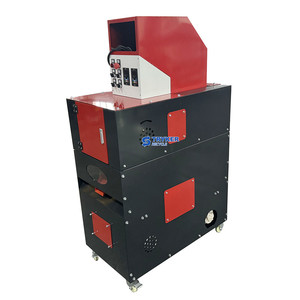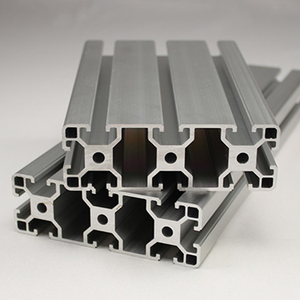
All categories
Featured selections
Trade Assurance
Buyer Central
Help Center
Get the app
Become a supplier

(6040 products available)



























Market Overview: The market for separate aluminum plastic machines is experiencing notable growth, driven by the increasing demand for efficient recycling processes across various industries. According to 360iResearch™, the global plastic extrusion machinery market, which includes technologies relevant to aluminum-plastic separation, grew from USD 7.10 billion in 2023 to USD 7.55 billion in 2024, with a projected CAGR of 6.58%, reaching USD 11.10 billion by 2030. This growth is largely influenced by the rising emphasis on sustainability and environmental regulations, pushing manufacturers to adopt advanced machinery that can effectively separate and recycle composite materials. Additionally, the heightened awareness surrounding plastic waste management has spurred investments in innovative recycling technologies, including machines specifically designed for separating aluminum from plastics.
Industry Insights: Consumer behavior is shifting towards environmentally friendly practices, further enhancing the market for separate aluminum plastic machines. The integration of automation and artificial intelligence in manufacturing processes is making these machines more efficient and user-friendly. As reported, the Asia-Pacific region is expected to see significant growth due to rapid industrialization and increasing government initiatives focused on recycling. In this context, major players in the industry are investing in R&D to develop high-quality, energy-efficient machines tailored to meet the evolving demands of end-users. The competitive landscape is characterized by a mix of established manufacturers and emerging players who are innovating to capture niche markets, particularly in regions with stringent recycling mandates, thereby shaping the future of the separate aluminum plastic machine market.
A separate aluminum plastic machine is designed to separate aluminum plastic composites. Such composites are common in used food packaging like Tetra Pak containers. These machines work on various principles and come in different varieties to separate the aluminum and plastic components effectively. The main types of separate aluminum plastic machines are:
Regular maintenance can keep the aluminum plastic separator working stably and prolong its service life. Here are some tips for maintenance.
Waste management companies are the primary users of the separate aluminum plastic machine. Such equipment helps them better handle waste and reduce the number of items ending up in landfills. One good example is a coffee pod. Both were made separately and need separation to recycle them properly.
Drinking companies also use such machines to separate products so they can recycle them properly. The plastic that is not recyclable goes through an energy-recovery process that produces energy in the form of heat, which can variable and also be used to power a plant.
Packaging industries are looking for ways to recycle as much as they can. Many are using separating machines to set up proper recycling systems. Aluminum and plastic are separated as per their required standards, and more materials can be recycled, setting up a more sustainable packaging industry.
DIYers or at-home users might use small separating machines. They will usually pay to recycle their materials or go through the trouble of recycling inventions at home to make the process easier. Home machines are becoming more popular because more people are interested in sustainability and finding ways to reduce waste.
Designers looking for ways to incorporate recycled materials into their designs will have to use a separating machine. More designers are interested in creating sustainable products and looking for ways to use recycled materials like vinyl flooring, tiles, and carpets.
Pay attention to sorting efficiency:
Aluminum plastic separator machines with higher sorting efficiencies can handle large volumes of waste, which is crucial for meeting production demands in industrial settings. Investing in a machine with optimal separation efficiency can lead to more streamlined operations, reduced processing times, and ultimately higher productivity.
Consider the processing capacity:
For businesses with high waste volumes, investing in a machine with a larger processing capacity is essential. Such a machine can handle more waste material simultaneously, which is crucial for maintaining efficient production rates and meeting the demands of large-scale operations.
Look at the technical characteristics:
Advanced features like automated sorting, self-cleaning mechanisms, and energy-efficient designs can significantly improve operational efficiency and reduce the need for manual intervention. Moreover, machines equipped with intelligent sorting systems that can discern various types of plastics and aluminum will offer superior separation accuracy.
Understand the installation and operating requirements:
Before making a purchase, it's crucial to ensure that the machine's installation and operational prerequisites align with the capabilities of the existing facility and workforce. This alignment is vital for a smooth integration process, thereby minimizing downtime and facilitating quick acclimatization to the new equipment.
Pay attention to the sustainability feature:
The aluminum plastic separation machine plays a critical role in waste management systems by facilitating recycling efforts. These machines contribute to sustainability initiatives by efficiently separating aluminum and plastic materials, which are often challenging to recycle together.
Think about the long-term maintenance:
The long-term maintenance needs of the machine are equally important as its immediate maintenance requirements. Investing in equipment that is both easy to maintain and durable can lead to substantial savings in repair and upkeep costs over time. Such a focus on long-term resilience can be a critical factor in ensuring the economic viability and operational efficiency of waste processing facilities.
Q1: Are separate aluminum plastic machines eco-friendly? If so, how?
A1: Yes, separating aluminum and plastic is an eco-friendly practice. Recycling materials individually reduces plastic waste in landfills and the oceans. Furthermore, recycling aluminum and plastic separately increases the demand for recycled materials, which aids the development of a sustainable recycling industry.
Q2: What kinds of aluminum and plastic can be separated using a separate aluminum plastic machine?
A2: Alu and plastic composed of dissimilar polymers are separable using a separate aluminum plastic machine. This includes aluminum plastic laminates (commonly used in packaging) and coated aluminum (often found in packaging for beverages or food products).
Q3: Is the separate aluminum plastic machine safe to use?
A3: Yes, the separate aluminum plastic machine is safe to use. Nonetheless, like any other machine, it is crucial that the operator observe the instructions thoroughly and take the necessary safety precautions.
Q4: How long does it take for a separate aluminum plastic machine to separate a single batch?
A4: The duration varies based on the machine's capacity and the batch's size. Some machines can process batches within an hour, while others might take several hours.
Q5: Can users modify the parameters during the separation process?
A5: Yes, most modern separate aluminum plastic machines allow users to modify the parameters to adjust the separation according to different material characteristics.